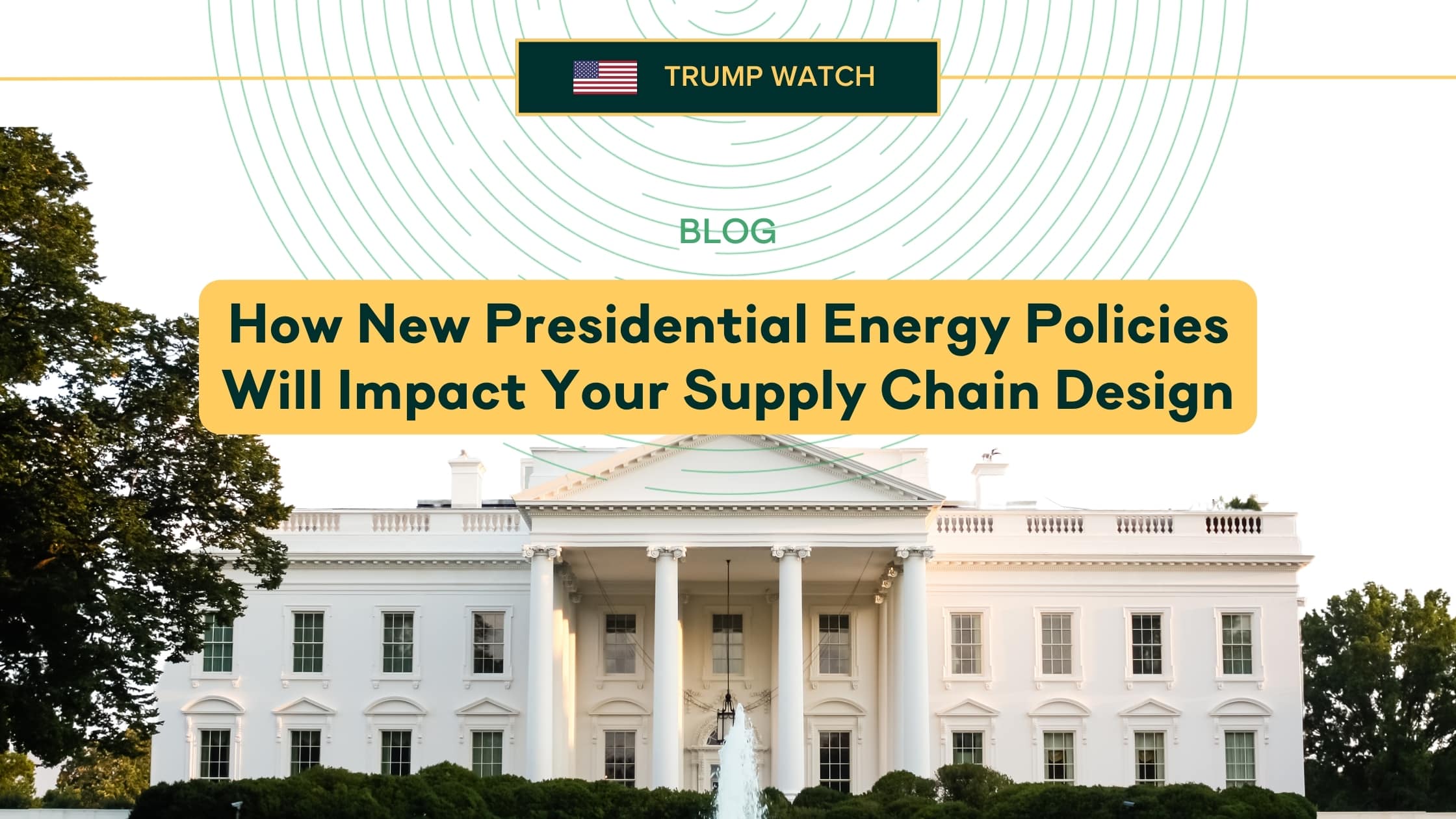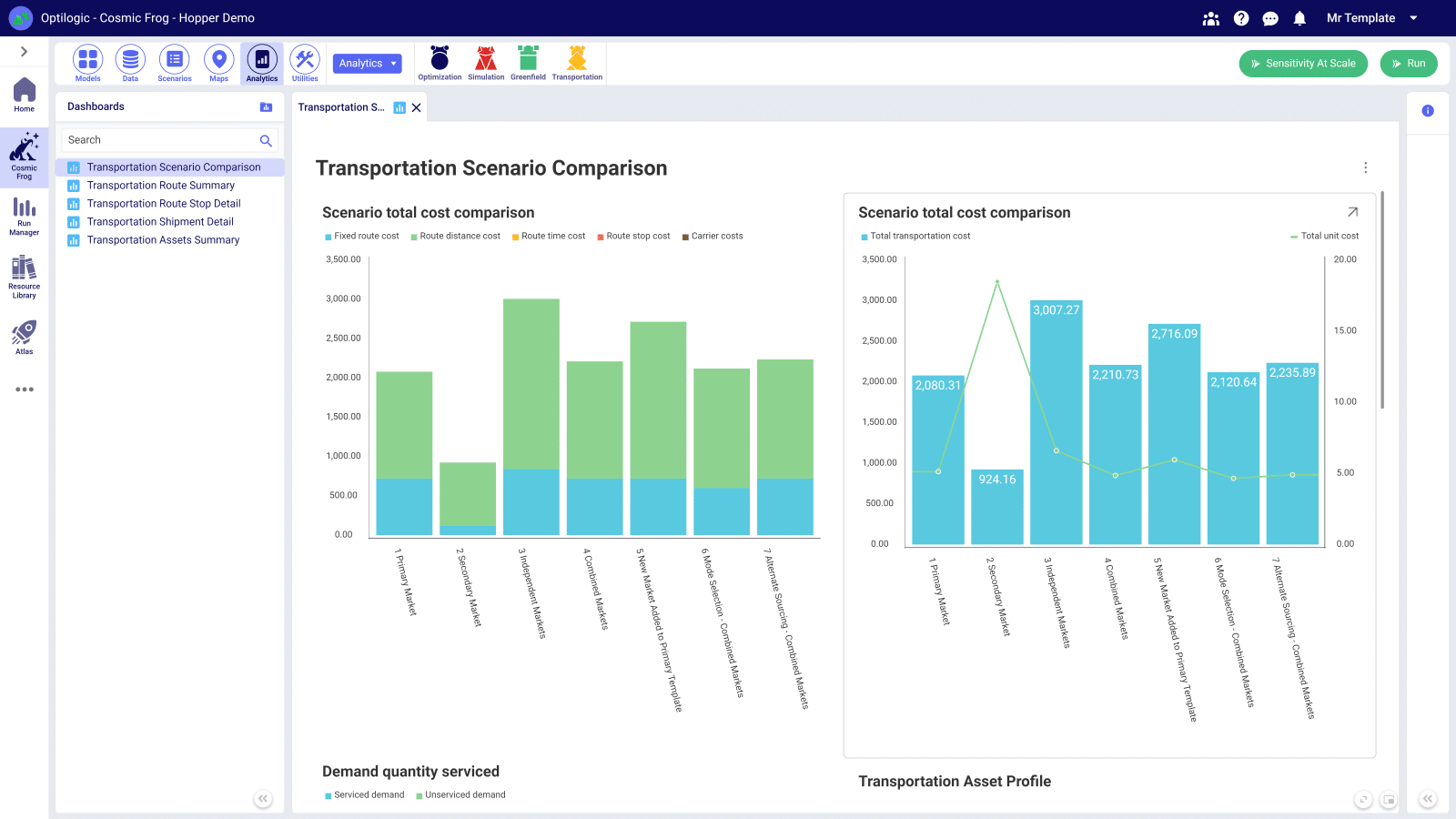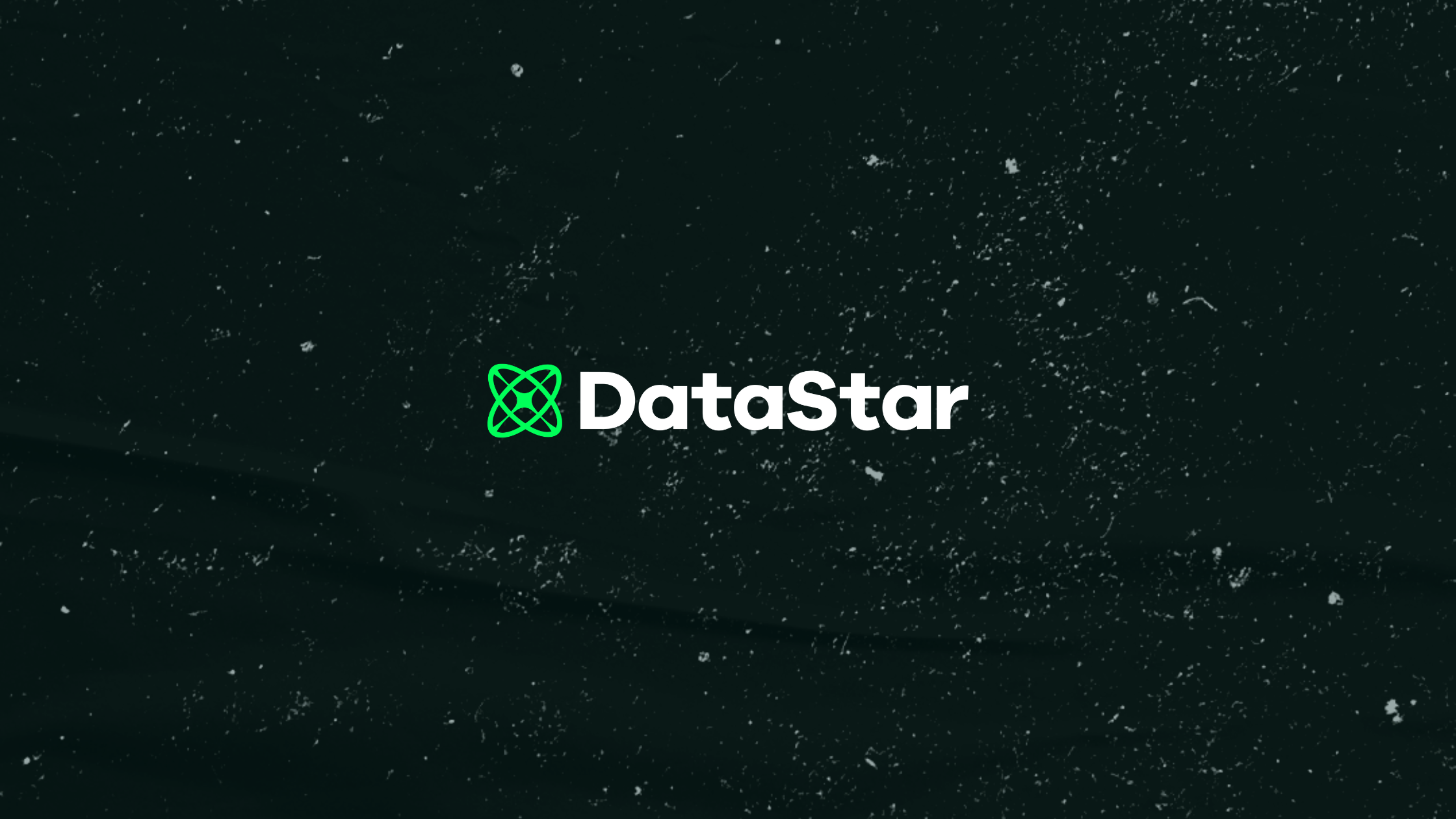
Trump signed several executive orders that directly affect U.S. energy policy just on his first day in office. Here’s what supply chain executives need to know about how the Trump 2.0 energy policies will influence supply chain design.
Published by
Published on
March 12, 2025





We recently published our inaugural “Trump Watch” series blog on how supply chain execs can navigate Trump 2.0 tariff policies. We’ve been following The Economist’s coverage of Presidential policy updates in its “First 100 Days” tracker. We decided to launch our own “Trump Watch” series which follows the Economist’s content with supply chain design perspective from Optilogic thought leaders.
There have been numerous examples in just the past 40 years of shifts in energy policy with the entrance of a new president, including Reagan’s reversal of Carter’s conservationist energy policies, and George W. Bush drilling for oil in the Arctic National Wildlife Refuge (ANWR) after taking over from Bill Clinton in 2001. Trump’s second term blew the previous pace of change out of the water, as he signed several executive orders that directly affect U.S. energy policy just on his first day in office. Here’s what supply chain executives need to know about how the Trump 2.0 energy policies will influence supply chain design.
Trump's energy policy impacts supply chain design by influencing energy costs, operational processes, import tariffs, geopolitical risks, and sustainability considerations. Businesses must carefully design and analyze these factors to develop resilient, cost-effective supply chain strategies.
While there might be some short-term reductions in transportation costs due to increased domestic energy production, the long-term effects of the new energy policies could be more complex due to funding freezes and regulatory changes. The impacts of Donald Trump's energy policies on supply chain costs can be analyzed through several factors, particularly energy prices, regulatory changes, and infrastructure shifts. Here are some of the likely effects:
Trump's energy policies were generally focused on boosting domestic oil, natural gas, and coal production, alongside deregulating the energy sector. The likely impacts on supply chain costs from energy prices are:
A strong push for fossil fuel development (e.g., oil, natural gas, and coal) could have mixed effects:
Trump's push for infrastructure development, including pipelines and oil-related infrastructure, could improve transportation and energy distribution networks:
Overall, Trump's energy policies could lead to a reduction in transportation costs, especially for distributors reliant on fuel. While short-term costs will go down, the long-term impact on supply chains will depend on how the world shifts toward an energy strategy and how geopolitical dynamics evolve. Deregulation might also bring both benefits (lower costs) and risks (potential increase in demand). Companies with fossil fuel-dependent operations could see lower energy and transportation costs, but those with international dependencies or commitments to sustainability may face different results.
Optilogic Cosmic Frog is a supply chain design solution that enables anyone in your company to answer supply chain questions using a shared virtual supply chain model. Using Cosmic Frog, analysts can anticipate energy policy impacts, evaluate alternative strategies, and rapidly implement results with easy access for business users.

Cosmic Frog’s transportation route optimization capability allows you to see how changes in your supply chain network design would impact transportation choices.
We recently published our inaugural “Trump Watch” series blog on how supply chain execs can navigate Trump 2.0 tariff policies. We’ve been following The Economist’s coverage of Presidential policy updates in its “First 100 Days” tracker. We decided to launch our own “Trump Watch” series which follows the Economist’s content with supply chain design perspective from Optilogic thought leaders.
There have been numerous examples in just the past 40 years of shifts in energy policy with the entrance of a new president, including Reagan’s reversal of Carter’s conservationist energy policies, and George W. Bush drilling for oil in the Arctic National Wildlife Refuge (ANWR) after taking over from Bill Clinton in 2001. Trump’s second term blew the previous pace of change out of the water, as he signed several executive orders that directly affect U.S. energy policy just on his first day in office. Here’s what supply chain executives need to know about how the Trump 2.0 energy policies will influence supply chain design.
Trump's energy policy impacts supply chain design by influencing energy costs, operational processes, import tariffs, geopolitical risks, and sustainability considerations. Businesses must carefully design and analyze these factors to develop resilient, cost-effective supply chain strategies.
While there might be some short-term reductions in transportation costs due to increased domestic energy production, the long-term effects of the new energy policies could be more complex due to funding freezes and regulatory changes. The impacts of Donald Trump's energy policies on supply chain costs can be analyzed through several factors, particularly energy prices, regulatory changes, and infrastructure shifts. Here are some of the likely effects:
Trump's energy policies were generally focused on boosting domestic oil, natural gas, and coal production, alongside deregulating the energy sector. The likely impacts on supply chain costs from energy prices are:
A strong push for fossil fuel development (e.g., oil, natural gas, and coal) could have mixed effects:
Trump's push for infrastructure development, including pipelines and oil-related infrastructure, could improve transportation and energy distribution networks:
Overall, Trump's energy policies could lead to a reduction in transportation costs, especially for distributors reliant on fuel. While short-term costs will go down, the long-term impact on supply chains will depend on how the world shifts toward an energy strategy and how geopolitical dynamics evolve. Deregulation might also bring both benefits (lower costs) and risks (potential increase in demand). Companies with fossil fuel-dependent operations could see lower energy and transportation costs, but those with international dependencies or commitments to sustainability may face different results.
Optilogic Cosmic Frog is a supply chain design solution that enables anyone in your company to answer supply chain questions using a shared virtual supply chain model. Using Cosmic Frog, analysts can anticipate energy policy impacts, evaluate alternative strategies, and rapidly implement results with easy access for business users.

Cosmic Frog’s transportation route optimization capability allows you to see how changes in your supply chain network design would impact transportation choices.
Fill out the form to unlock the full content
Lorem ipsum dolor sit amet, consectetur adipiscing elit. Suspendisse varius enim in eros elementum tristique. Duis cursus, mi quis viverra ornare, eros dolor interdum nulla, ut commodo diam libero vitae erat. Aenean faucibus nibh et justo cursus id rutrum lorem imperdiet. Nunc ut sem vitae risus tristique posuere.

.png)

.png)
